Volume 21, Issue 2
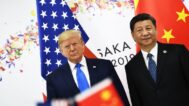
Regional Overview
May — August 2019Defining and Refining the Indo-Pacific Concept
For the past two years, US officials have made reference to a new Indo-Pacific Strategy. The June 1 release of the Defense Department’s Indo-Pacific Strategy Report provides some clarification and contains many familiar themes, including the need for a credible forward presence and strengthened alliances and partnerships “to preserve a free and open Indo-Pacific where sovereignty, independence, and territorial integrity are safeguarded.” The Report further notes “the critical linkages between economics, governance, and security.” Not to be outdone, ASEAN introduced its own Outlook on the Indo-Pacific, with “inclusivity” as the central theme. The G20 meeting in Osaka was probably as successful as was possible, but the group offered little more than rhetorical support for efforts to quell the US-China trade war. Finally, the Japan, South Korea, China trilateral provided some reason for hope –but just a little.
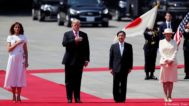
US - Japan
May — August 2019A Busy Summer of Bilateralism
Relations between the United States and Japan were active over the summer with two visits by President Donald Trump to Japan. The first was for Trump and First Lady Melania Trump to be the first state guests of the new Reiwa Era. The second was to participate in the G20 Summit in Osaka. Meanwhile, the two countries engaged in a series of trade talks that produced the broad outline of an agreement that is expected to be signed in late September. Throughout, domestic politics played an important role with upper house elections in Japan and Trump’s threat of tariffs influencing the pace of trade negotiations. In coming months, the US presidential election campaign will likely continue to shape alliance management.
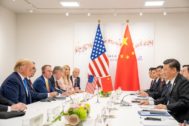
US - China
May — August 2019The Trade Deal Falls Through
US-China trade talks collapsed after China reneged on a significant portion of a draft agreement that had been painstakingly written by US and Chinese negotiators. After Donald Trump and Xi Jinping met on the sidelines of the G20 in Osaka, talks resumed but failed to make progress. Acting Secretary of Defense Patrick Shanahan met Defense Minster Wei Fenghe and both delivered speeches at the Shangri-La Dialogue in Singapore. The US sold two arms packages to Taiwan totaling over $10 billion, which included M1A2T Abrams tanks, 250 Stinger missiles, and 66 F16V fighter jets. The 26th ASEAN Regional Forum (ARF) provided an opportunity for Secretary of State Mike Pompeo and Foreign Minister Wang Yi to meet. The navies of both the US and China conducted drills in the South China Sea, and US Navy ships conducted three freedom of navigation operations (FONOPs) in the Spratlys. Pro-democracy demonstrations in Hong Kong began in early June and continued throughout the summer with spasms of violence by Hong Kong police and protesters. Beijing accused the US of being behind the protests, a charge that Washington adamantly denied.
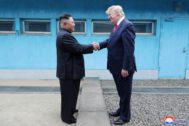
US - Korea
May — August 2019Friction, Impasse, and Projectiles
Despite the renewal of limited US-ROK joint exercises on the Korean Peninsula, the United States and South Korea saw friction on other fronts. This includes the lack of progress in US-DPRK talks and by extension South Korea’s engagement with the North, renewed focus on host-nation support during the new US defense secretary’s visit, the suggestion that the US would place intermediate-range missiles in South Korea, Seoul’s decision to withdraw from a defense intelligence-sharing pact with Japan, and President Trump’s perceived lack of sensitivity toward South Korean interests. The ROK’s economic slowdown complicated its growing strategic frustration, and the flareup in South Korea’s relations with Japan left the US pondering its role as tensions worsened between its two Northeast Asia allies. North Korea condemned the US-ROK military exercises, tested multiple new short-range missiles, praised Trump while berating his subordinates, and stalled on working-level talks, despite Kim Jong Un’s commitment to Trump in Panmunjom, following Trump’s historic step across the military demarcation line.
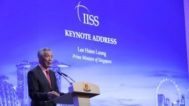
US - Southeast Asia
May — August 2019ASEAN Centrality Under Siege
Two regional meetings in Southeast Asia over the summer – the Shangri-La Dialogue in Singapore and the ASEAN Regional Forum in Bangkok – revealed growing angst among Southeast Asian leaders over narrowing political space in which to balance relations in the context of US-China competition. More broadly, the relevance of ASEAN in these polarizing times has come into question and subregional arrangements, such as the Ayeyawady-Chaopraya-Mekong Economic Cooperation Strategy (ACMECS) are emerging. Recent incidents point to growing Chinese assertiveness in the South China Sea. A reported agreement with Cambodia to build a strategic outpost on the Gulf of Thailand has drawn sharp criticism from Washington. But it is unclear how able or willing Southeast Asian governments are to push back since they view China as a critical economic partner. As several Southeast Asian leaders contemplate retirement, economic security is a common element in the legacies they envision.
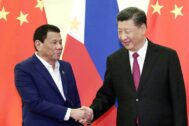
China - Southeast Asia
May — August 2019Broad Confidence, Coercive Advances, Complicated Regional Responses
Chinese officials and authoritative commentary continued their positive portrayal of China-Southeast Asia relations. Routine public assessments avowed confidence that differences over the South China Sea and challenges posed by the United States were manageable while China’s economic attraction for the region would grow. Against this favorable background, Chinese maritime forces, in moves Beijing did not publicize, challenged Vietnam and Malaysia over oil and gas drilling rights in the South China Sea. They also continued to use maritime force to challenge Manila’s efforts to construct modest infrastructure upgrades at Philippine-occupied Thitu Island.
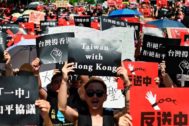
China - Taiwan
May — August 2019Hong Kong Impacts Taiwan Elections
The coming elections in Taiwan have shaped cross-strait relations. To a surprising degree, Hong Kong demonstrations have influenced the early campaign, helping President Tsai Ing-wen win her party’s nomination and requiring opposition candidates to reject Beijing’s “one country, two systems” more firmly than they would have otherwise. In the midst of US-China tensions, Washington has approved two major arms sales to Taiwan and taken other steps to improve US-Taiwan relations. Beijing opposes Tsai and has taken steps publicly and behind the scenes to boost the KMT’s populist candidate, Kaohsiung Mayor Han Kuo-yu. Beijing’s hardline response to Hong Kong demonstrations will likely continue to benefit Tsai as the election approaches in January.
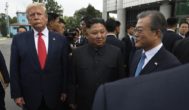
North Korea - South Korea
May — August 2019Pyongyang Shuns and Snarls; Seoul Seems in Denial
North Korea continued to freeze out the South over the summer months. Kim Jong Un did meet Moon Jae-in once, very briefly, but only on the sidelines of his third summit (also brief) with Donald Trump at Panmunjom on June 30. He also sent his sister, Kim Yo Jong, to the same venue with a wreath and condolences for a former ROK first lady – but with no message for Moon, whom in August DPRK media derided as “an impudent guy.” Meanwhile Pyongyang was deaf to Seoul’s entreaties on all fronts, including their agreed joint teams for the 2020 Tokyo Olympics. It also reverted to missile tests, specifically of new short-range weapons that could target the South. Despite all this Moon remained publicly upbeat. John Bolton’s departure from the White House may improve prospects, if Trump now offers some sanctions relief. But as this shows, inter-Korean relations are now (by Kim’s choice) subordinate to US-DPRK ties, not important in their own right.
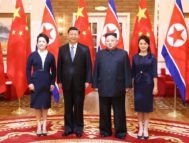
China - Korea
May — August 2019A New Chapter?
Beijing and Pyongyang celebrate 70 years of diplomatic relations this year. Xi Jinping traveled to Pyongyang in June for a fifth summit with Kim Jong Un, the first visit to North Korea by China’s top leader in 14 years. The meeting aimed to advance the bilateral friendship to a new phase of comprehensive development and drive regional coordination on the Korean Peninsula. In contrast, Xi’s 40-minute meeting with South Korean President Moon Jae-in on the sidelines of the G20 Summit in Osaka seemed to marginalize Moon, subordinate the relationship with South Korea, and place Xi as an intermediary between North Korea and the rest of world. Pyongyang’s missile tests, however, showed the limited effects of such diplomacy, even after surprise exchanges between US, North Korean, and South Korean leaders in Panmunjom on June 30. The current expansion of China-DPRK political, military, economic, and cultural exchanges also presents challenges to sanctions implementation and human rights promotion.
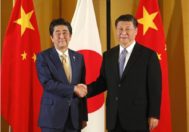
Japan - China
May — August 2019External Smiles, Internal Angst
Chinese and Japanese relations have been cordial during the summer months, but tensions over history, economics, disputed territories, and military expansion continue to simmer. Several meetings failed to reach consensus on issues. China continued to tighten its de facto control over disputed territories as Japan reinforced its capabilities to defend those areas. Several major Japanese corporations announced plans to move production out of China, citing concerns with the US-China trade war. Worsening relations between Seoul and Tokyo, and in particular Seoul’s decision to end an intelligence-sharing agreement, could weaken plans for joint resistance to Chinese and North Korean activities. No date has been set for Chairman Xi Jinping’s long-delayed reciprocal state visit to Japan.
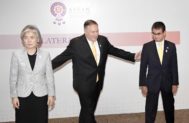
Japan - Korea
May — August 2019Cold Economics, Cold Politics
It is hard to find anything truly unprecedented in a South Korea-Japan relationship that has long seen periods of elevated tension. That is what makes the recent escalation of disputes into the economic relationship a moment of outsize significance in the history of the relationship. As recently as the last update for Comparative Connections in May, we concluded that “South Korea-Japan economic and trade relations have remained … largely unrelated to political developments and driven by practical considerations.” That assessment reflected the fact that, however high the political tensions, there have been two unwritten red lines: first, allowing political tensions to harm existing, mutually beneficial security cooperation for deterring North Korean provocations, especially when working jointly with the US; second, bringing those tensions into the economic relationship. Over the last four months, those red lines have been blurred in a series of escalating retaliatory moves with direct consequences for both countries and the regional economic and security order as a whole.
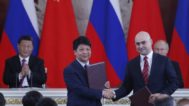
China - Russia
May — August 2019Beautiful Relationship in a Brave/Grave New World
China-Russia summit diplomacy was in overdrive this June when Chairman Xi Jinping and President Vladimir Putin met on four separate occasions. In early June, they declared that the Russian-Chinese strategic partnership relationship entered a “new age,” while celebrating the 70th anniversary of diplomatic relations. Barely a week later, Putin and Xi attended the 19th SCO Summit in Bishkek. From there, they joined fifth Interaction and Confidence-Building Measures in Asia (CICA) Summit in Dushanbe. At the end of June, they were part of the G20 Summit in Osaka, where they joined in a mini Russia-India-China (RIC) gathering with Indian PM Narendra Modi before meeting separately with US President Donald Trump. There was also a significant upgrade in joint activity by the militaries. It began with the maritime stage of the annual Joint Sea naval drill in the Yellow Sea in early May and ended with China’s participation in Russia’s Center-2019 exercises on Sept. 16-21. In between, Russian and Chinese bombers conducted the first-ever joint patrol over the Sea of Japan and the East China Sea. Meanwhile, Chinese analysts actively deliberated the nature, scale, depth and limits of China’s “best-ever” relationship with Russia. The consensus seemed to move ahead with closer ties across board.

Australia-US/East Asia
September 2018 — August 2019Scott Morrison, Donald Trump, and the Indo-Pacific
Echoing uncertain geopolitical times, Australian politics confounded opinion polls and pundits at the May 18 federal election. Re-election of the Liberal-National coalition government was a “miracle” result, according to Prime Minister Scott Morrison. The surprise victory transformed Morrison’s authority within his party and the country – and burnished his relationship with US President Donald Trump. Morrison says the shift in the US-China relationship from engagement to competition is “inevitable,” calling for the Indo-Pacific to deepen patterns of cooperation so the competition does not become adversarial. Australia was an early adopter of the Indo-Pacific concept, describing it as a useful geographic construct. Now Australia is embracing the Indo-Pacific not merely as construct, but as a US strategy – the Free and Open Indo-Pacific.